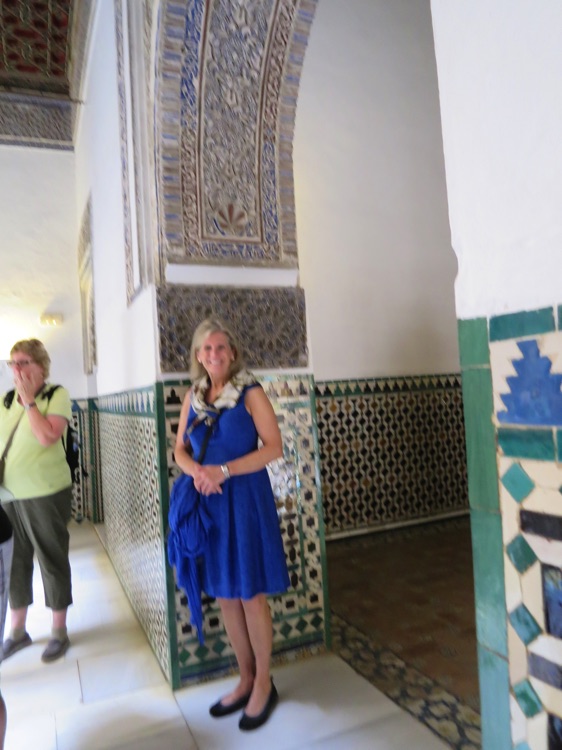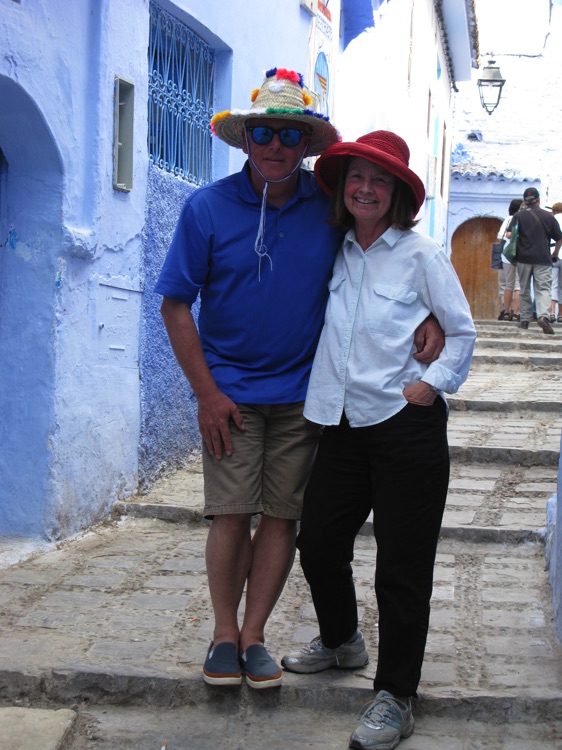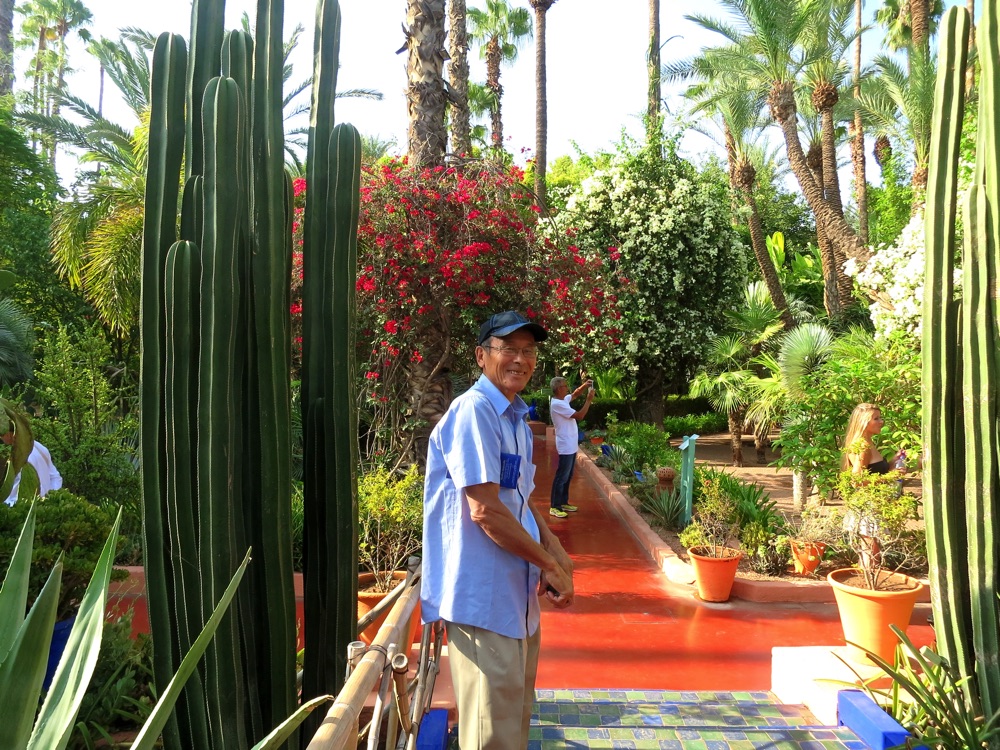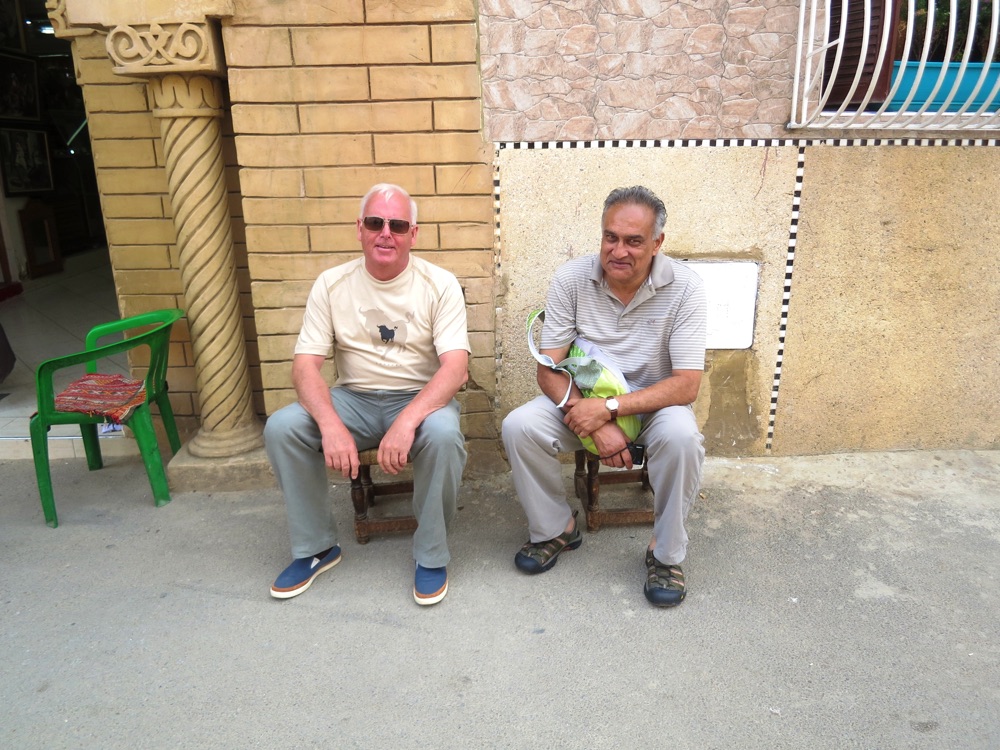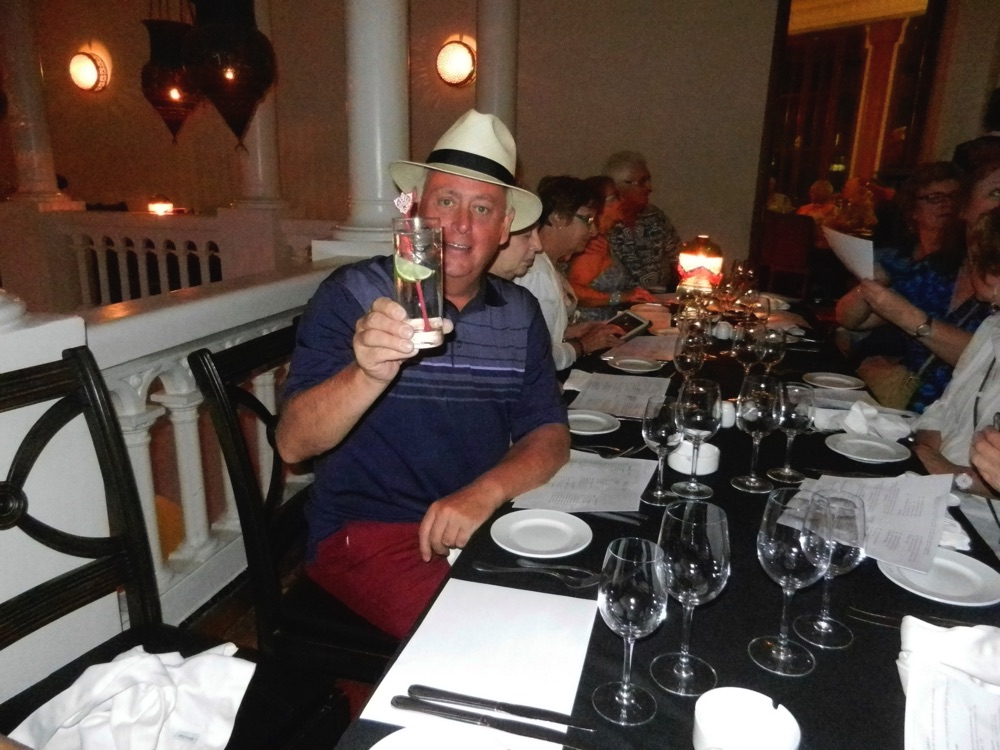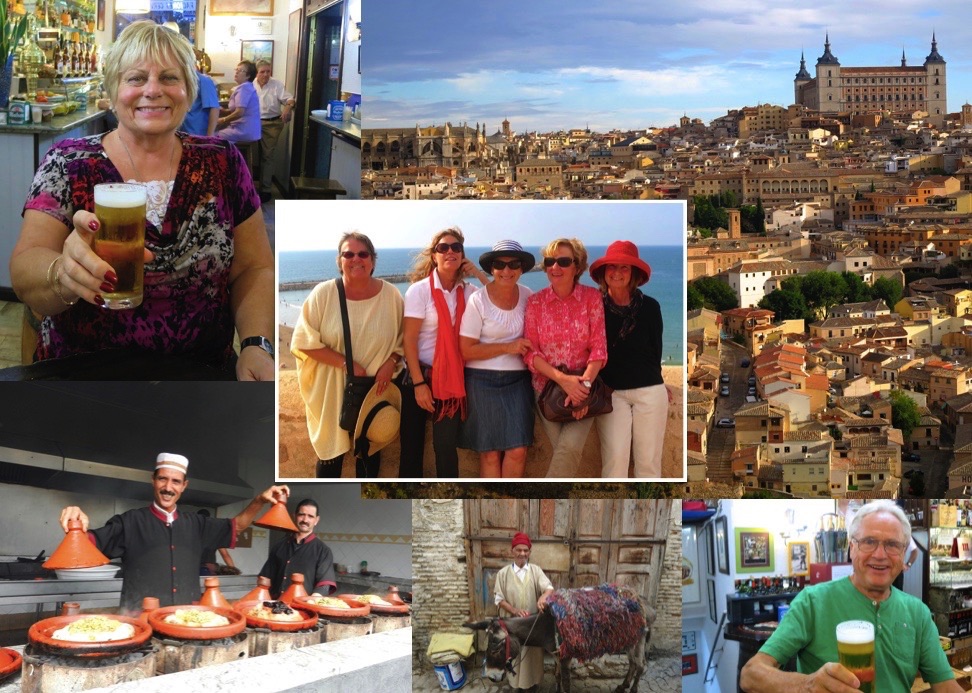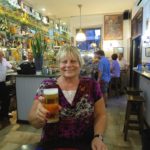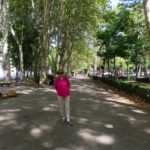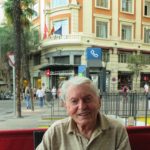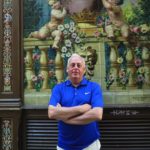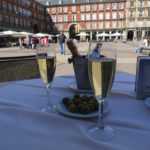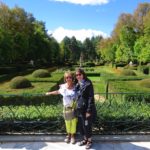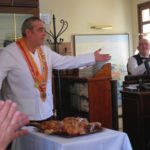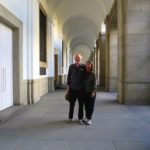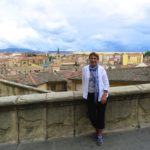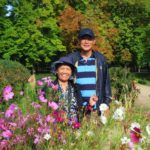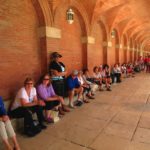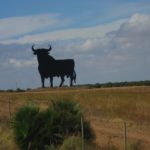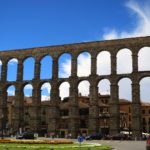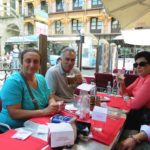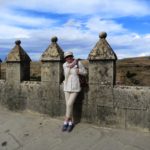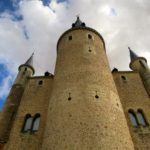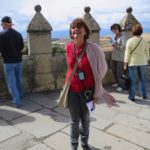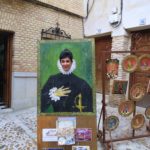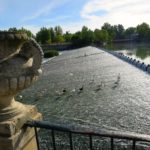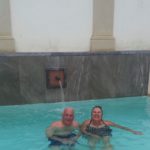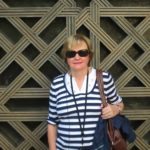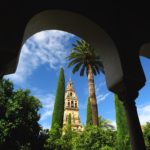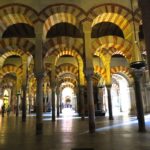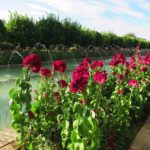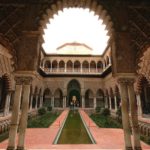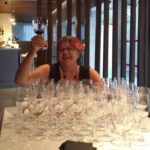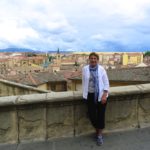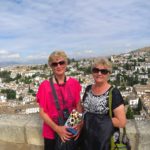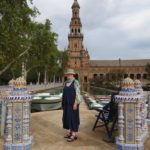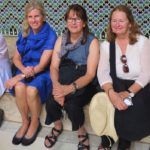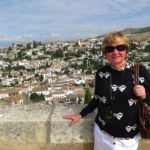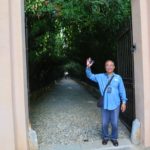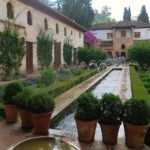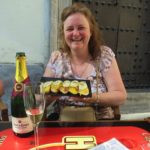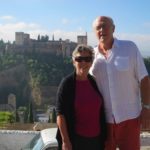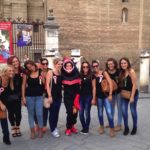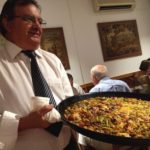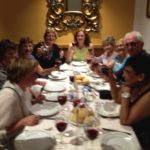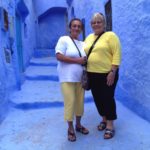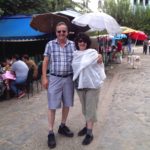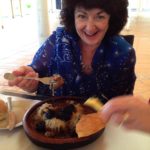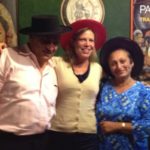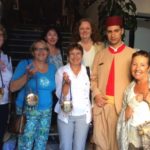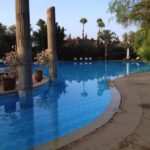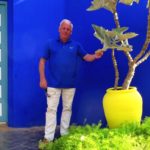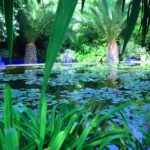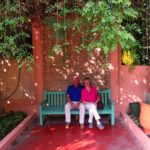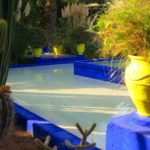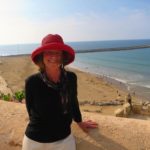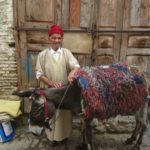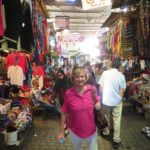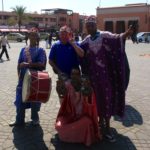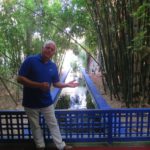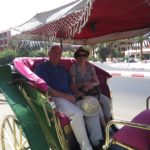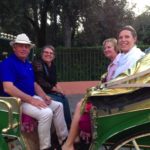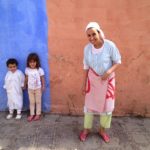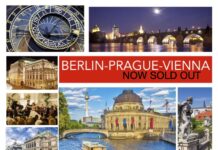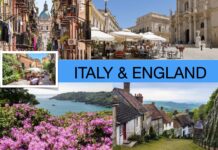In September, 2014, we went to Spain, where we first gathered for a few days in Madrid before heading south to Toledo, Cordoba, Seville and Granada, then crossed the Strait of Gibraltar into North Africa to visit the key towns and cities of Morocco.
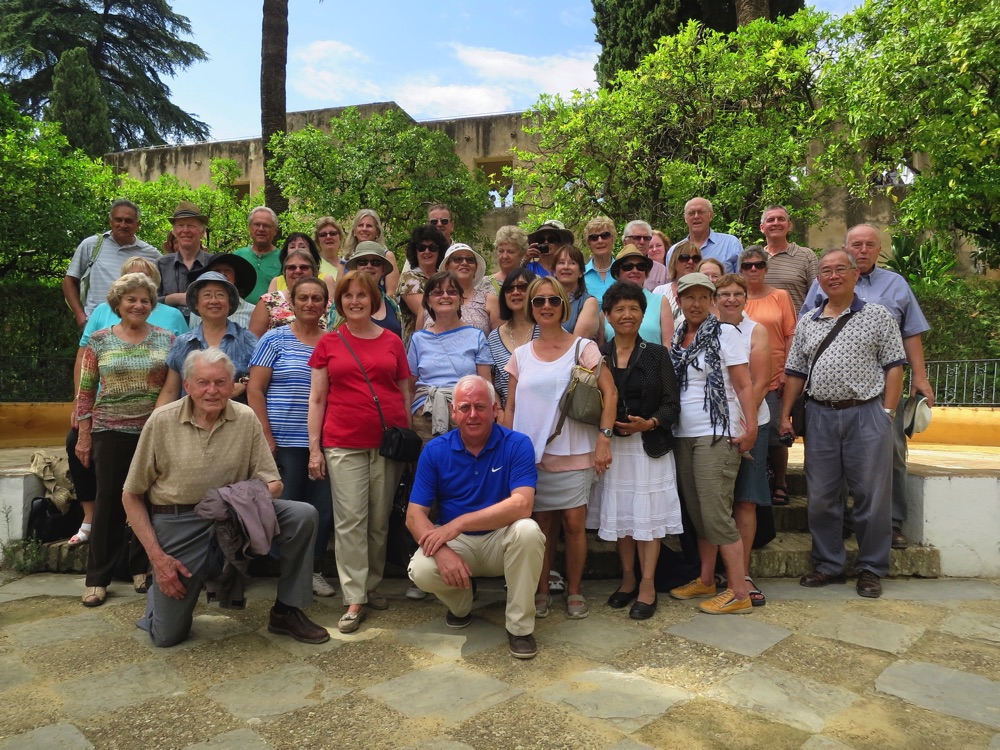
Early fall is the perfect time of year to be in Madrid: Not too hot during the day and the temperature is ideal at night for strolling and sitting outside in cafes.
Immediately, we all fell in love with the city’s fascinating and diverse range of architecture styles as well as its many attractive plazas and quaint side-streets.
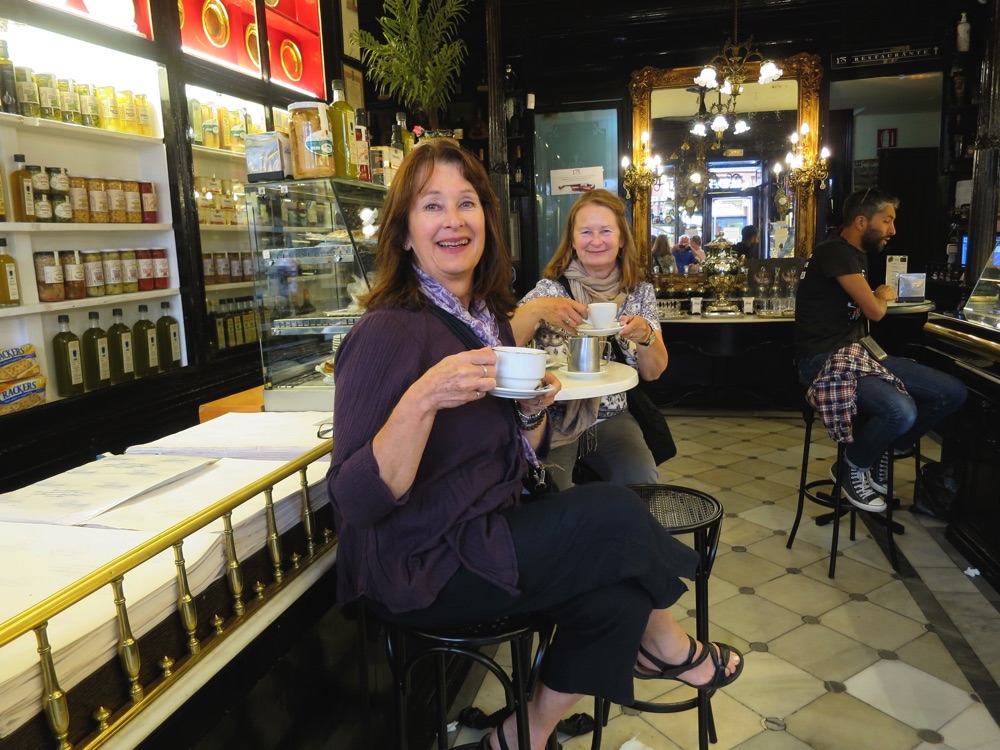
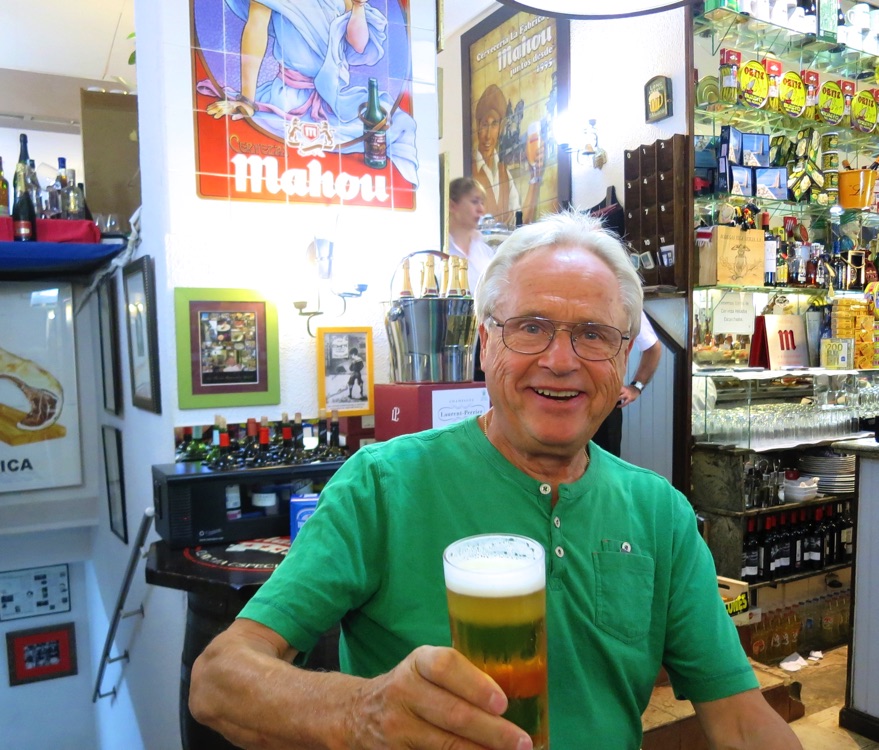
Our hotel, NH Paseo del Prado, was located directly across the street from the Prado Museum and within easy walking distance of other top galleries, including the Thyssen-Bornemisza museum and Reina Sofia modern art museum, both of which we had time to explore.
We also liked that our hotel was located only a few minutes walk from the botanical garden, Retiro Park, and just down the street from the lovely social scene at Plaza Santa de Ana.
In the huge Retiro Park, one of the largest, formal garden landscapes in Europe, we found more than 350 acres of woodlands and gardens. It was heavenly to walk along the magnificent Paseo de la Argentina and up to the boating lake in front of the gigantic Monument to Alfonso Xll.
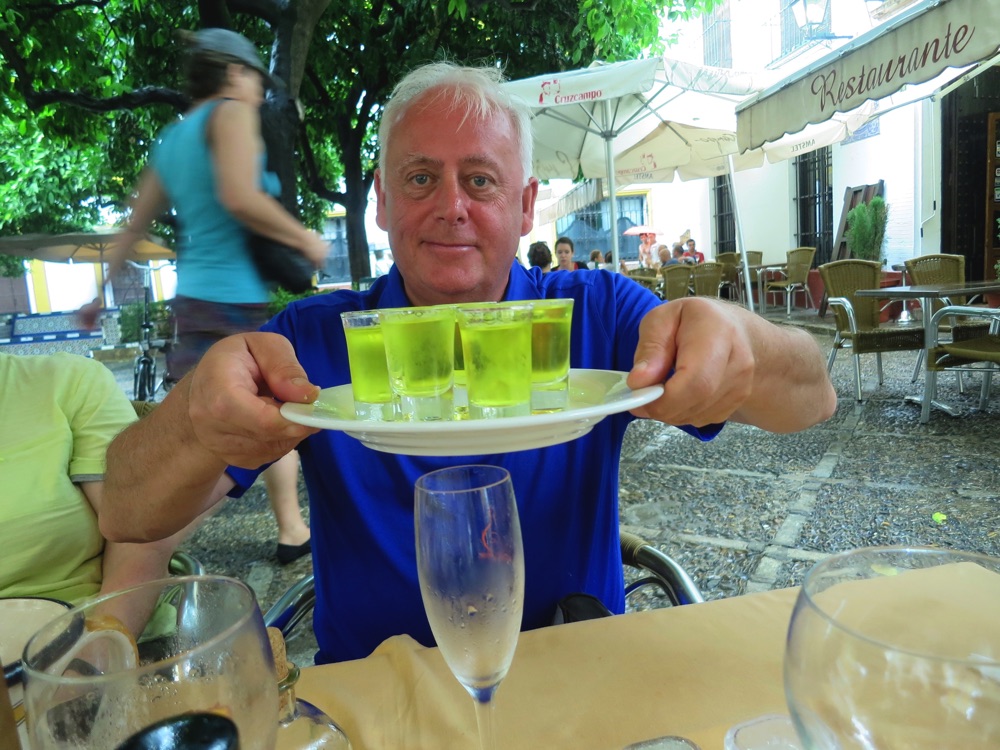
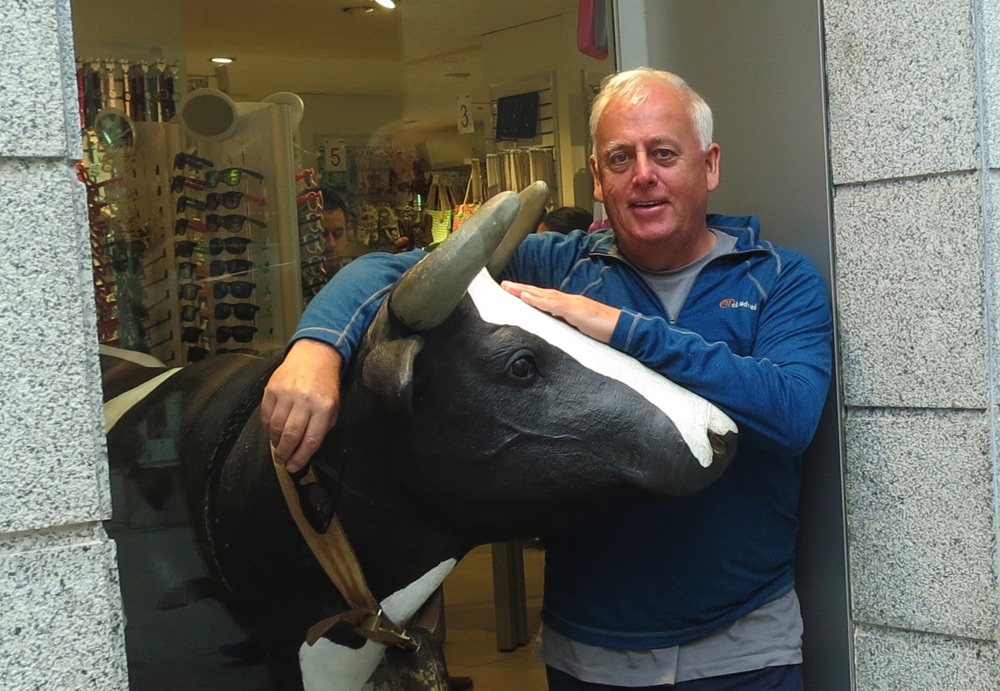
The Retiro also has a large Crystal Palace, inspired by the glass palace of the same name in London.
At the Prado, we saw Goya’s extraordinary Second of May and Third of May paintings, plus halls full of paintings by Rubens and El Greco and Ribera.
And just before the gallery closed, we got to see Bosch’s surreal Garden of Earthly Delights and Triumph of Death. The “black paintings” of Goya, especially one called Fight to the Death with Clubs, were just as startling.
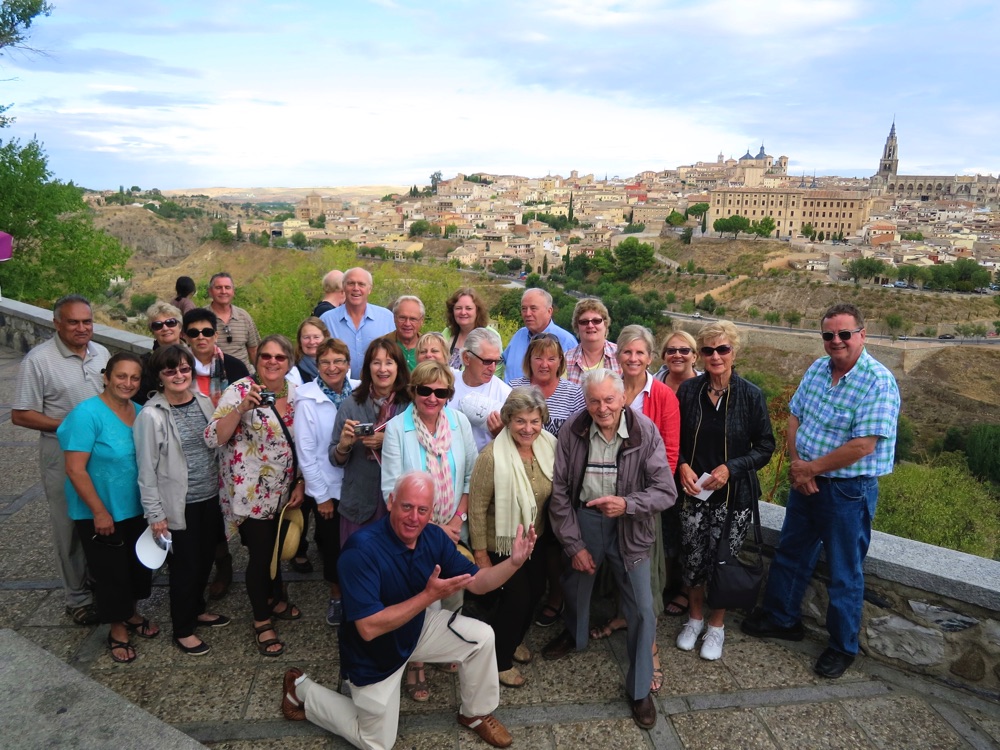
While staying in Madrid, we also visited Segovia to see the famous Roman aqueduct and also down to Aranjuez to see visit the royal summer residence.
On our last day in Madrid, we travelled 50 km south of the city to visit the royal palace and garden at Aranjuez.
This was the spring palace for the royal family. In summer, they moved to the cool palace of La Granja, north of the city.
The garden at Aranjuez inspired Spanish composer Joaquin Rodrigo to write one of the most beautiful pieces of music for the guitar. I played the Gypsy King’s version of Concerto de Aranjuez on the bus.
Once inside the garden, we immediately fell in love with a beautiful pink flowered tree that was dotted here and there throughout the fountain garden.
This turned out to be crepe myrtle (Lagerstroemia indica) with a mottled pinkish-grey bark.
While the fountains in the garden were not running, the refreshing sound of rushing water was created by the racing River Tagus which cascaded over a weir and ran alongside and around the garden which occupies a man-made island
We stood for quite a time and watched the beautiful scene of white geese paddling blissfully in sparkling water, streaming in a shallow cascade over the weir.
The rest of the garden looked a little care worn.
The boxwood parterres were crying out to be trimmed and the rows of empty stone jardinieres would have been transformed into an even greater loveliness with the simple addition of cascading pelargoniums.
Nevertheless, the garden delivered up all sorts of other charms: serene, green, peaceful woodland areas with geometric lines of yew.
Back in Madrid, my group spent their final afternoon in the city completing visits to Retiro Park and the Reina Sofia and the Thyssen museums as well as enjoying taste treats in wonderful pastry shops, such as L’Hardy at Calle Carrera de San Jeronimo in the centre of Madrid.
This beautiful old-time shop opened in 1839 and offers a variety of sherries for tasting and still caters to top hotels and high-society celebrations.
Leaving Madrid, we travelled to Toledo. We circled the city and stopped on the hillside opposite the town to enjoy the picturesque view over the city with dominant cathedral and castle.
Over St. Martin bridge, we entered the town centre via the more “garden” route that took us past an arid hillside of blue agaves and up a street with oleanders and hibiscus.
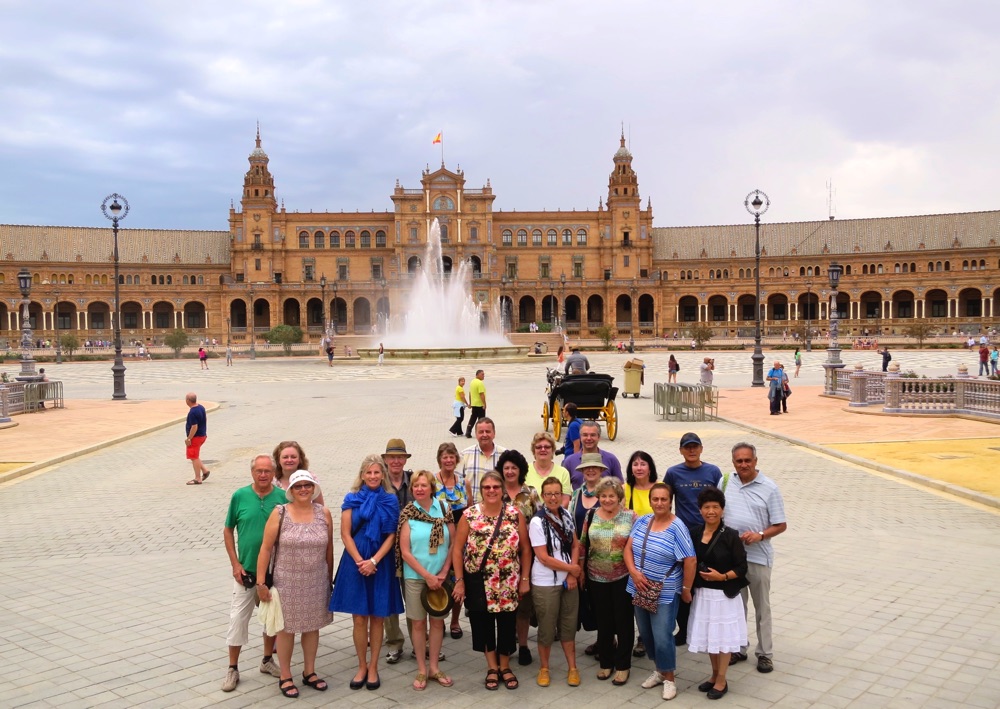
In the town, we stopped at the Sefardic Museum – a former Jewish synagogue that tells the story of the persecution of the Jews in that part of Toledo in the 15th century and their ultimate expulsion from the city and Spain during the Inquisition.
Further up the hill we paused to visit the tomb of Don Gonzalo Ruiz and see the famous painting about the much talked about ascension into heaven, The Burial of the Count of Orgaz by El Greco.
Continuing on, deeper into the town, we came to the cathedral before entering the central plaza for lunch.
From Toledo, we continued south through Don Quixote’s countryside of Castile la Mancha to Cordoba. On the way, we saw miles and miles of olive trees and were surprised to learn that 75 per cent of fresh olives in European stores come from Spain.
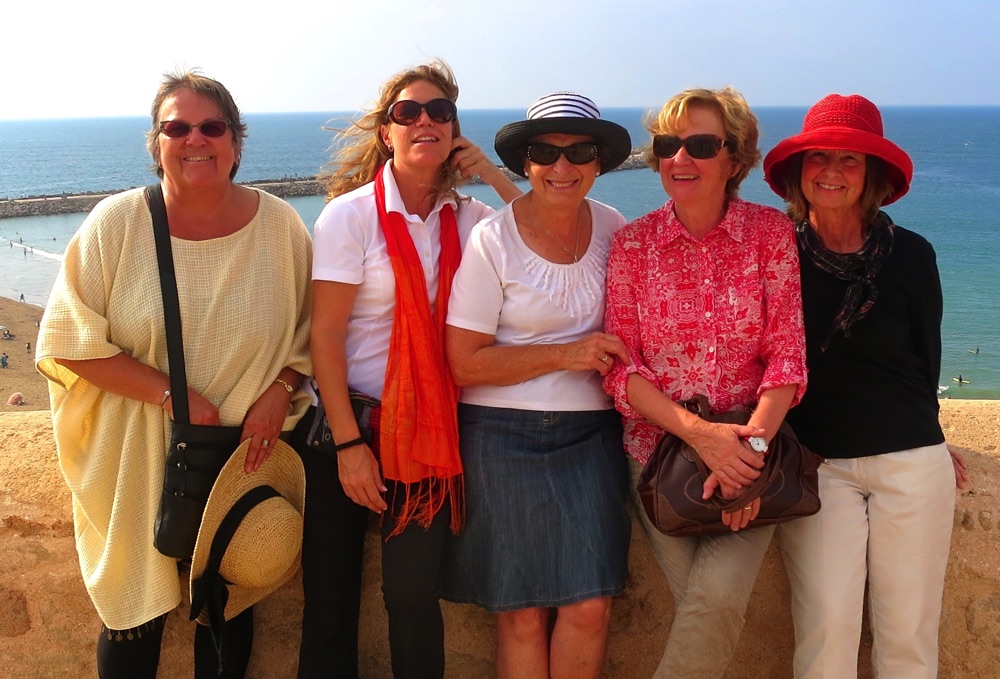
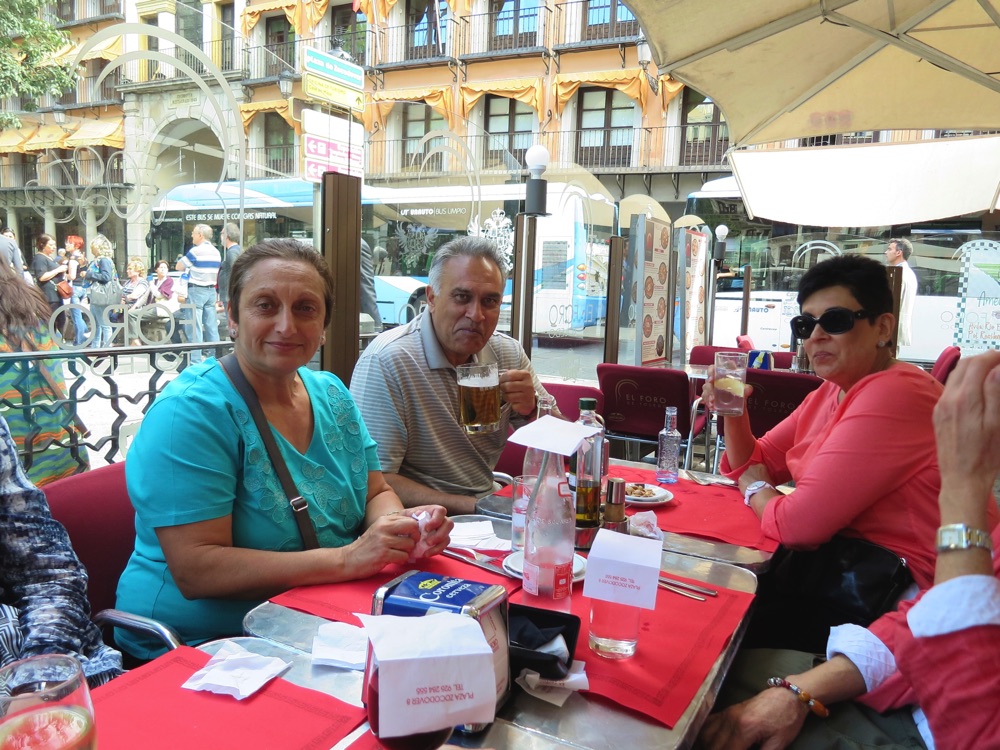
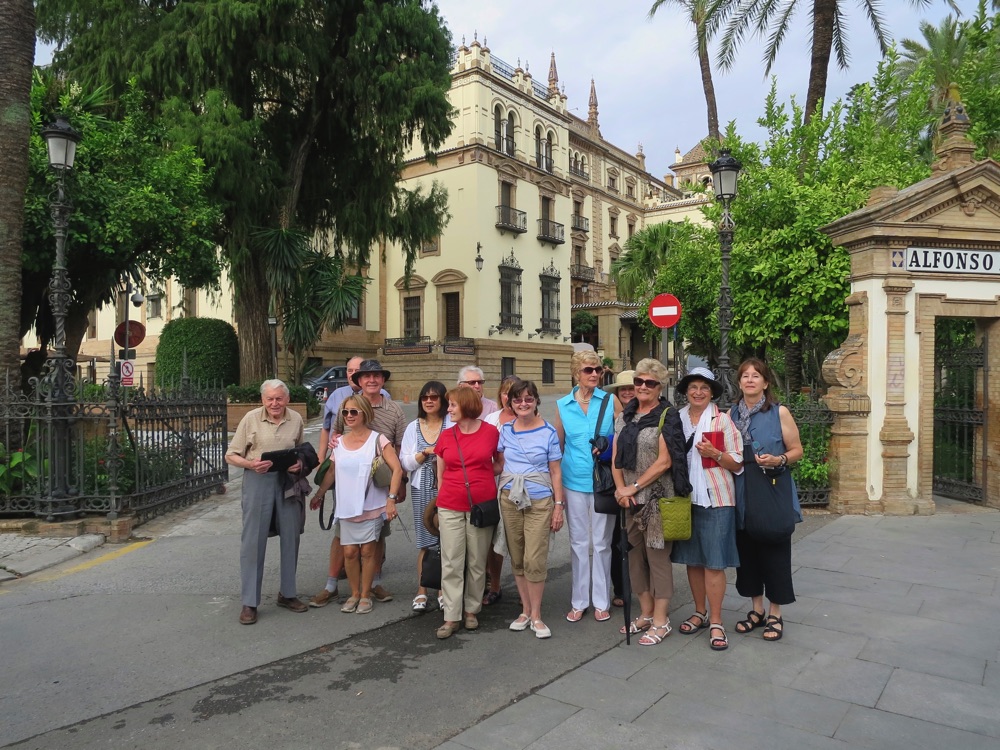
In Cordoba, we visited the famous mosque/cathedral and also the Jewish quarter and we toured the town.
From Cordoba, we moved on to Seville, and started our visit with a walking tour through the city, into the main shopping area on to the city hall and into the Jewish quarter.
On the way, we discovered how parakeets had invaded local parks and were constantly fighting over ripening dates in the palm trees.
We saw the city’s gothic cathedral, one of the biggest in Europe, and also visited the Alcazar and Maria Luisa park.
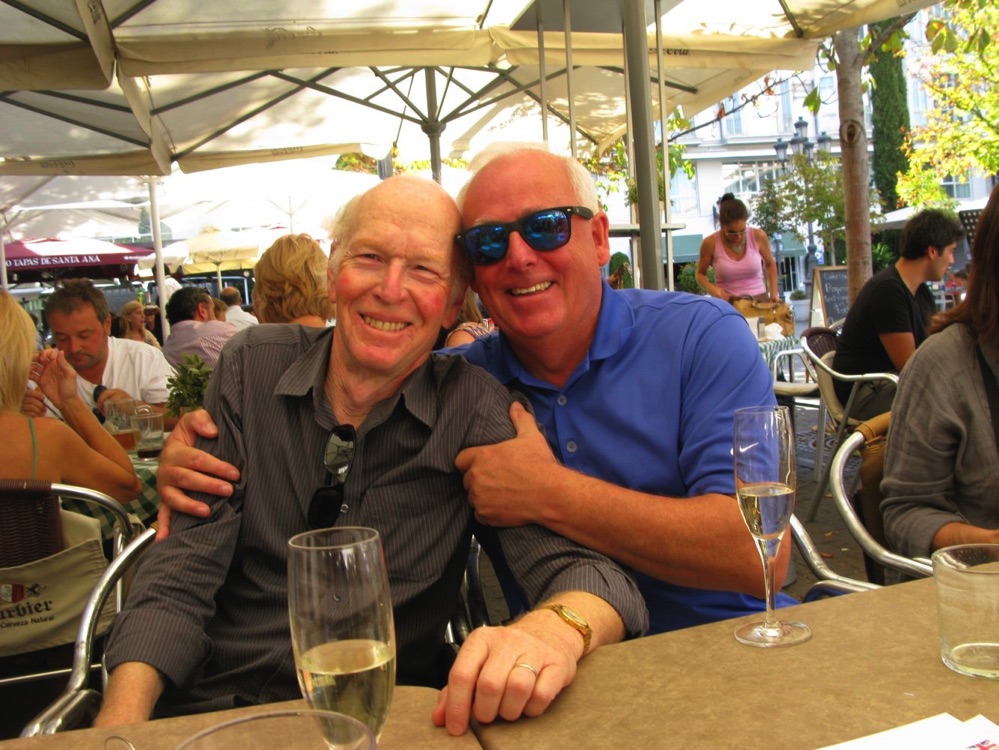
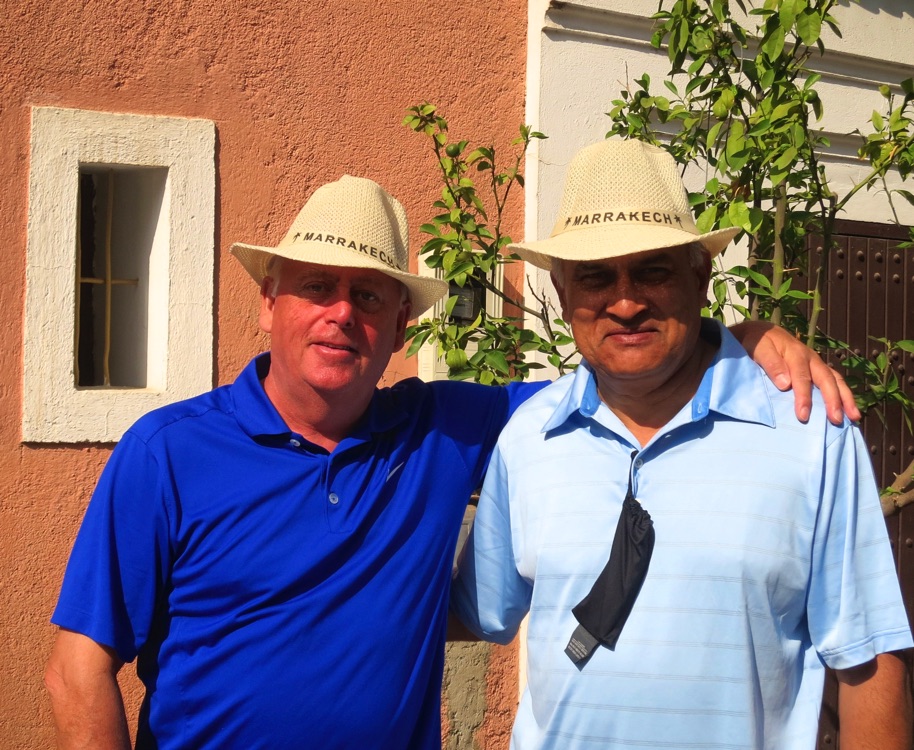
I was surprised by how many families with small children were in the town after 8 o’clock on a Saturday night, walking around enjoying the evening together. I think the presence of so many families downtown at this time set a very friendly and social tone.
We loved the Courtyard of the Maidens and gasped at the beauty of the Hall of Ambassadors, especially the golden dome.
The Alcazar gardens was a botanical delight with many unusual and rare trees, especially ones from South America and exciting examples of bougainvillea and jasmine and hedges of pittosporum and myrtle.
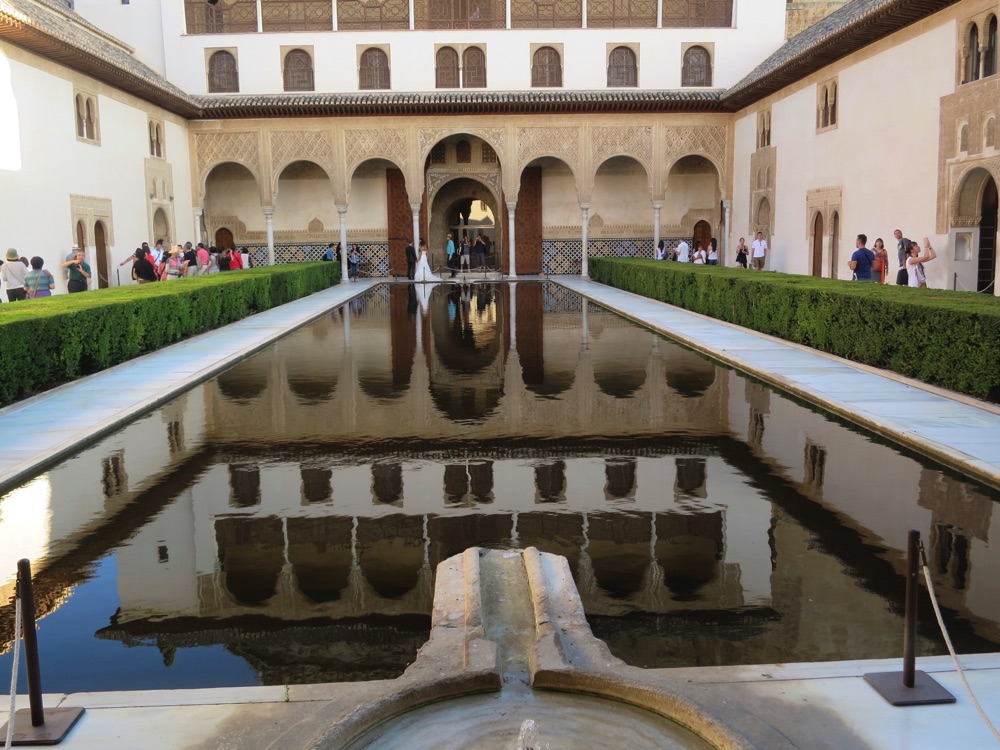
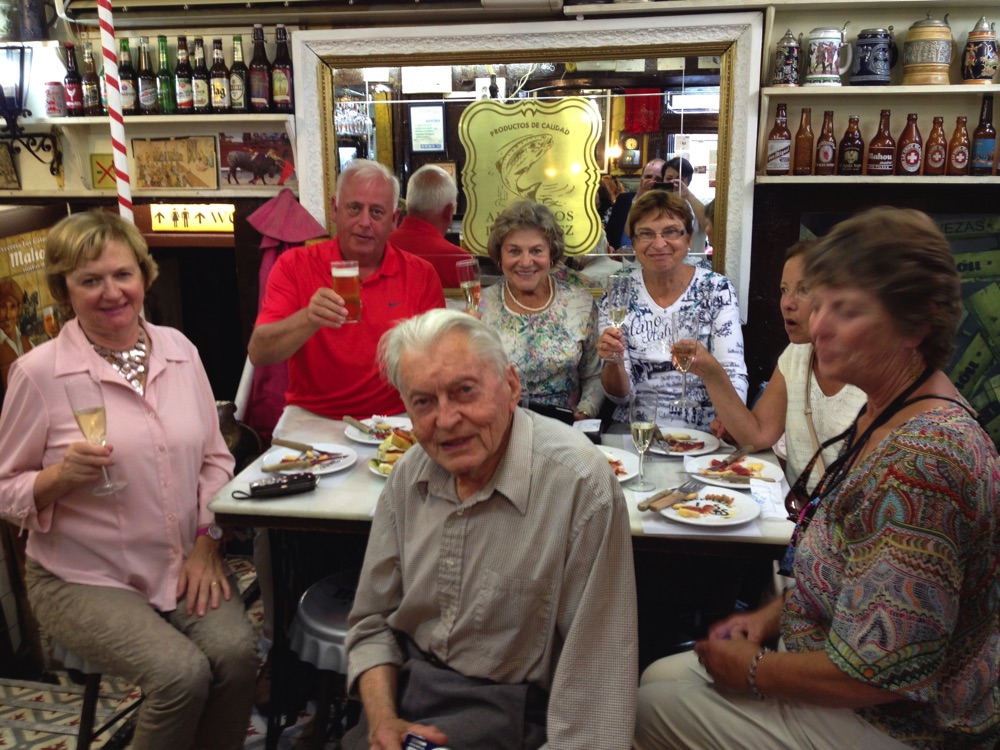
In the evening, we went to a performance of classical flamenco. It was astonishing to see how this ancient form of music and dance has been given such exciting new energy and style with the dancers striking beautiful sculptural and artistic lines.
From Seville, we moved to Granada, where we visited the Alhambra and toured the city, well known for its superb tapas.
From Granada, we travelled south, past Malaga and Marbella. We could see Gibraltar in the distance.
From Tarifa, we took the ferry to Tangier, Morocco, across the 17 km stretch Strait of Gilbraltar, separating Europe from Africa
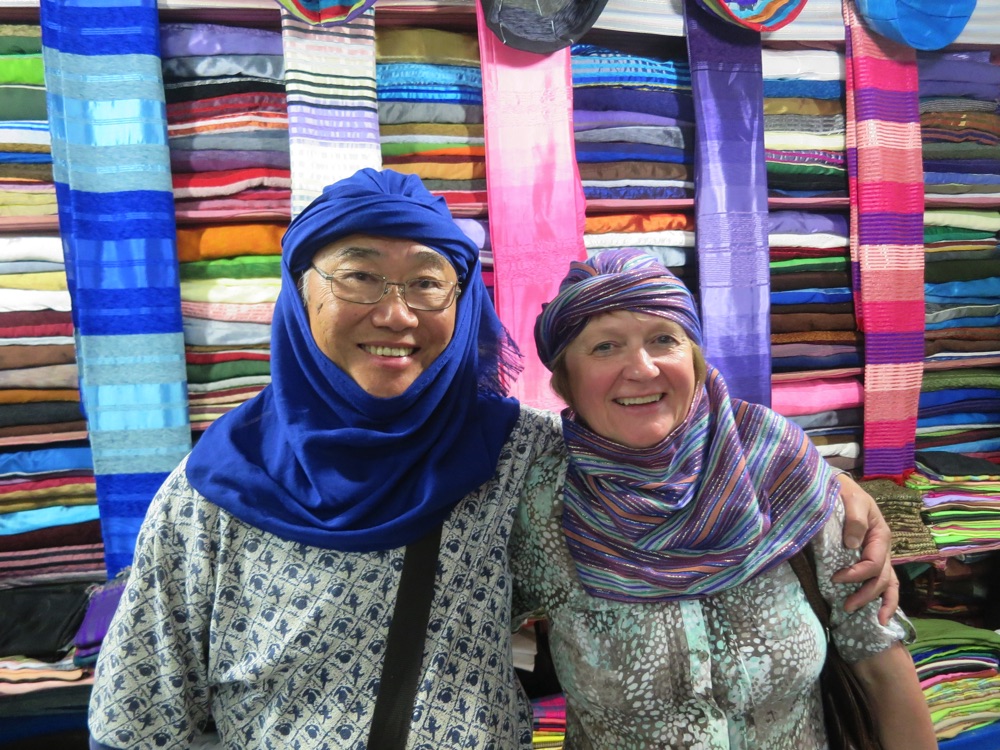
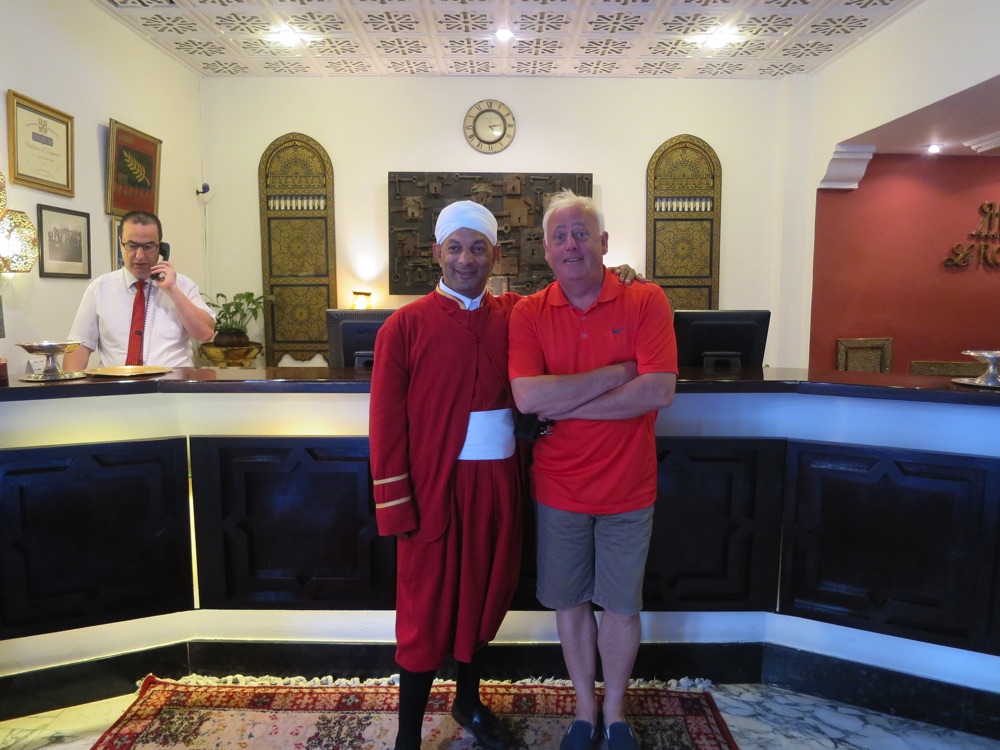
In Tangier, we stayed at the El Minzah Hotel, which has a wonderful old-world colonial ambience. In this town, we had our first experience of the exotic marketplace chaos of a typical Moroccan medina.
We walked through narrow streets lined with colourfully dressed vendors selling all sorts of products from fish and meat and vegetables and fruit to carpets, scarves, trays and teapots.
In most cases, I had to agree to pay a few dirhams to take a snapshot.
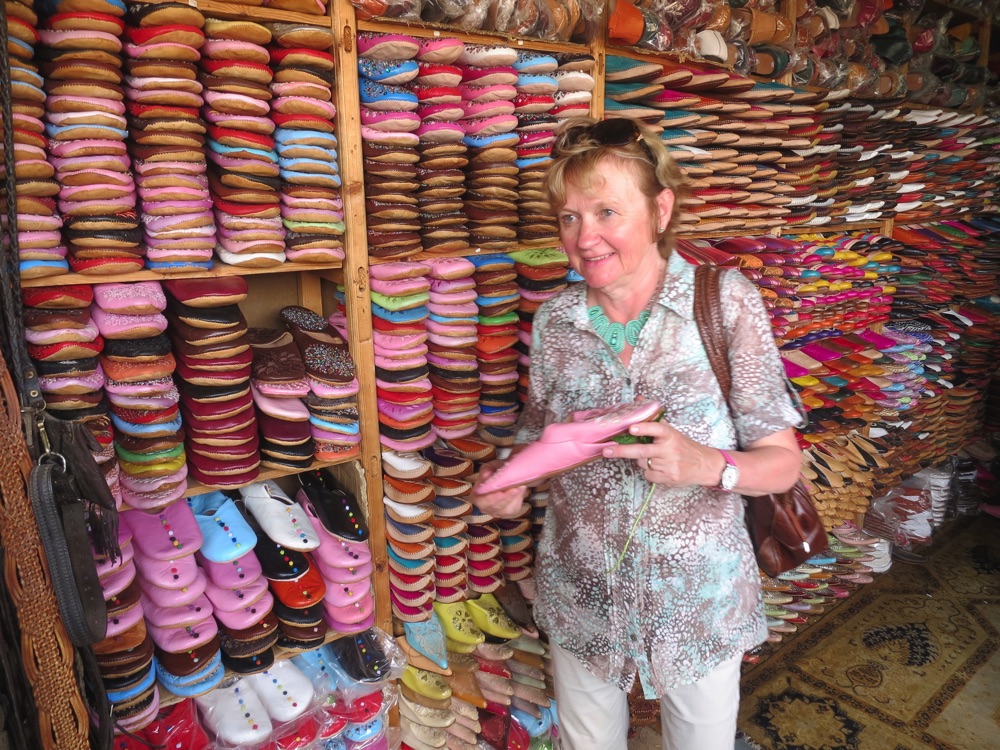
On our way to Fes, we stopped at Chefchaouen in the Rif mountains, a pretty town where most of the buildings and houses are painted blue as a sign of respect for the divine.
As it turned out, this was where many of us ate our first tagine – a clever way of cooking and serving a hot stew-like dish.
In Fes, we visited a pottery complex where people learned traditional crafts and produced various pottery products.
From there, we walked into the heart of the bustling medina and experience the medieval energy of the place with its honeycomb of streets (more than 9,500) full of surprises and some shocking sights and smells.
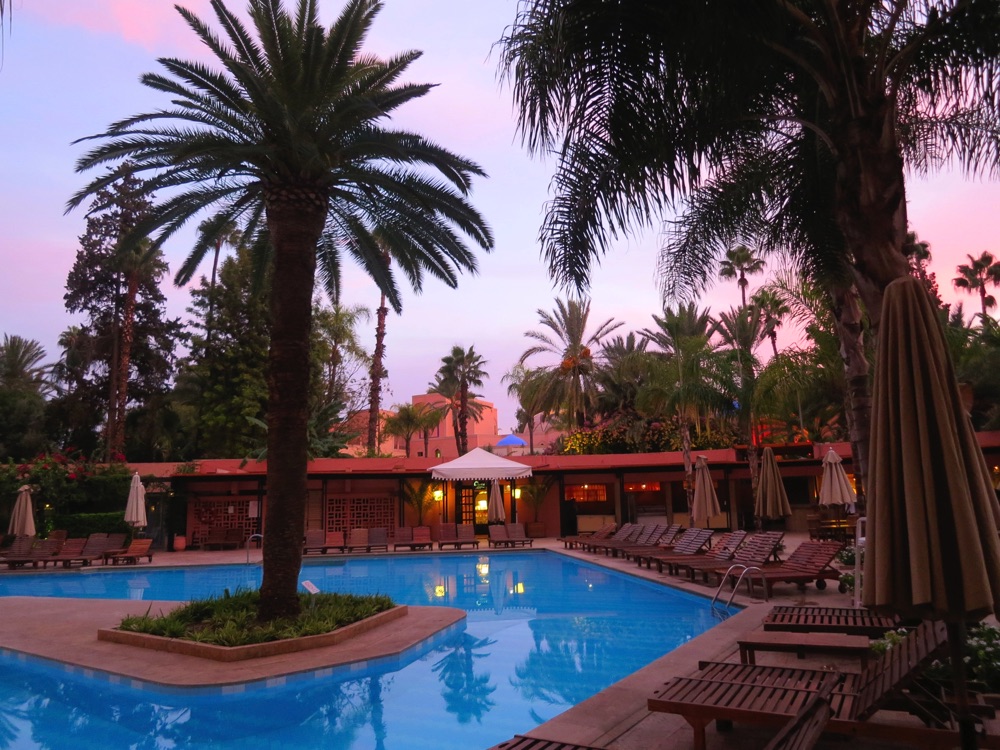
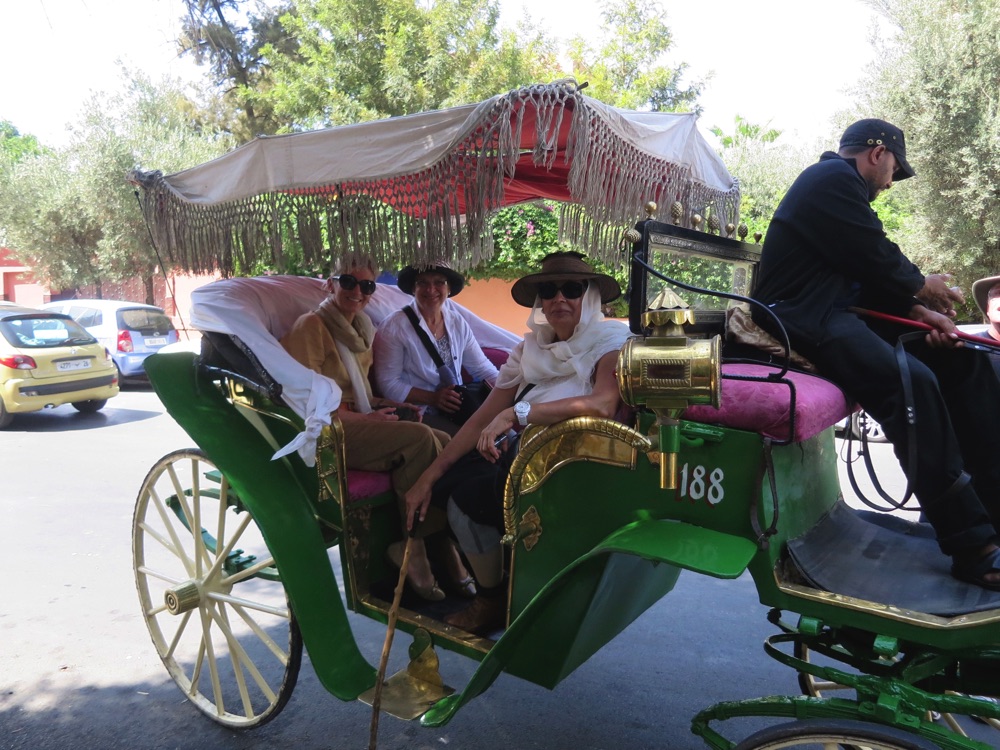
Donkeys, shoed with rubber shoes, making them silent, are used here to transport goods, such as freshly tanned leather, and their handlers give little warning as they charge through the narrow streets.
If you are not paying attention and do not respond to the cry “Balak, Balak!” (which means coming through, get out the way), you can easily get knocked against the wall.
Th Fes medina was a wild and chaotic place with a slight undercurrent of menace, real or imagined, that tended to raise our level of anxiety. I was glad to have expert guides with us.
I was told 350,000 people now live in the Fes medina, many more in recent years as a result of droughts that have driven people from country areas into the medina to seek protection and a chance of survival.
One of the most unforgettable scenes was an area where materials – animal hides and clothes – were dyed in circular pits of colour by workers standing directly in the pools of dye.
From Fes, we travelled to Casablanca, stopping on the way, first at Meknes to visit the fortress and palace that dates back to the 17th century and at Rabat, Morocco’s capital, to see the Hasan Tower and elaborate mausoleum of Mohammed V.
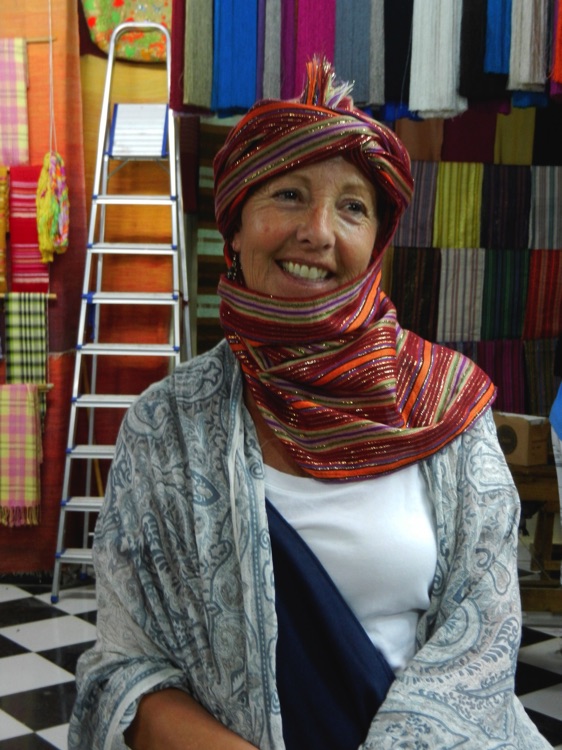
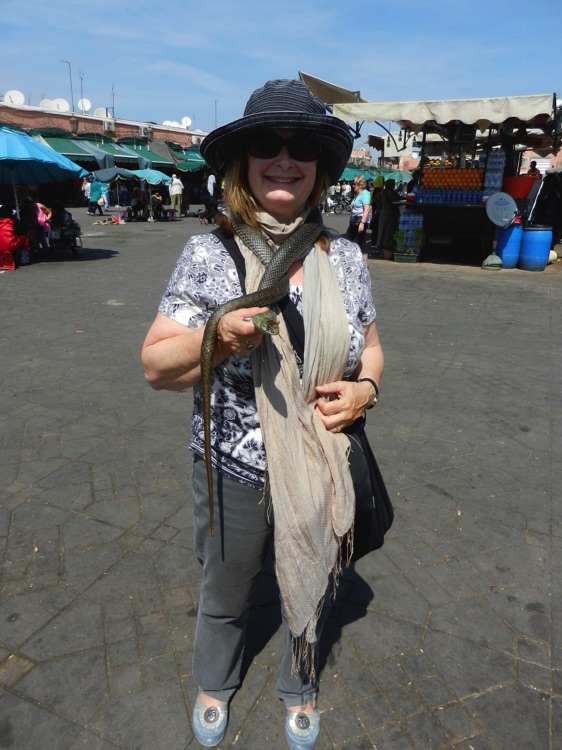
There was also time to walk into a waterfront neighbourhood in Rabat where we saw beautiful displays of bougainvillea and plumbago set against the blue and white walls of houses. It was also where we enjoyed almond cookies and glasses of delicious mint tea.
We concluded our day with dinner at Rick’s Cafe in Casablanca – a restaurant created by demand for a place styled on the cafe in the famous Bogart-Bergman movie.
It lived up to its billing and was a fun night, one I told myself if I didn’t experience I knew I would regret . . . maybe not today, maybe not tomorrow, but soon and for the rest of my life.
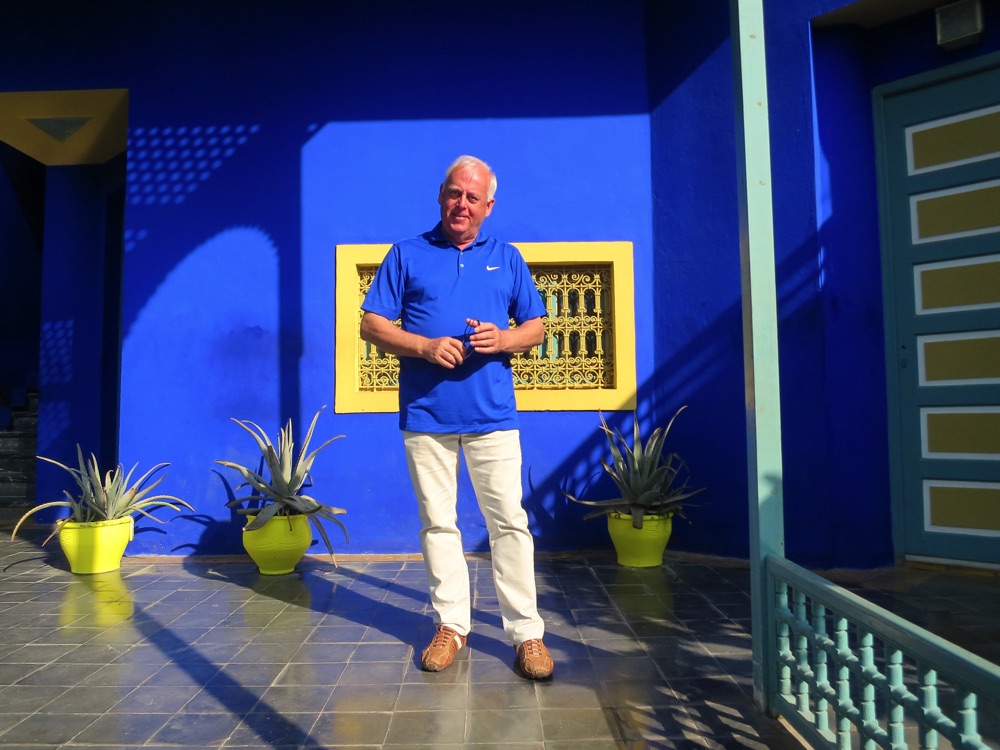
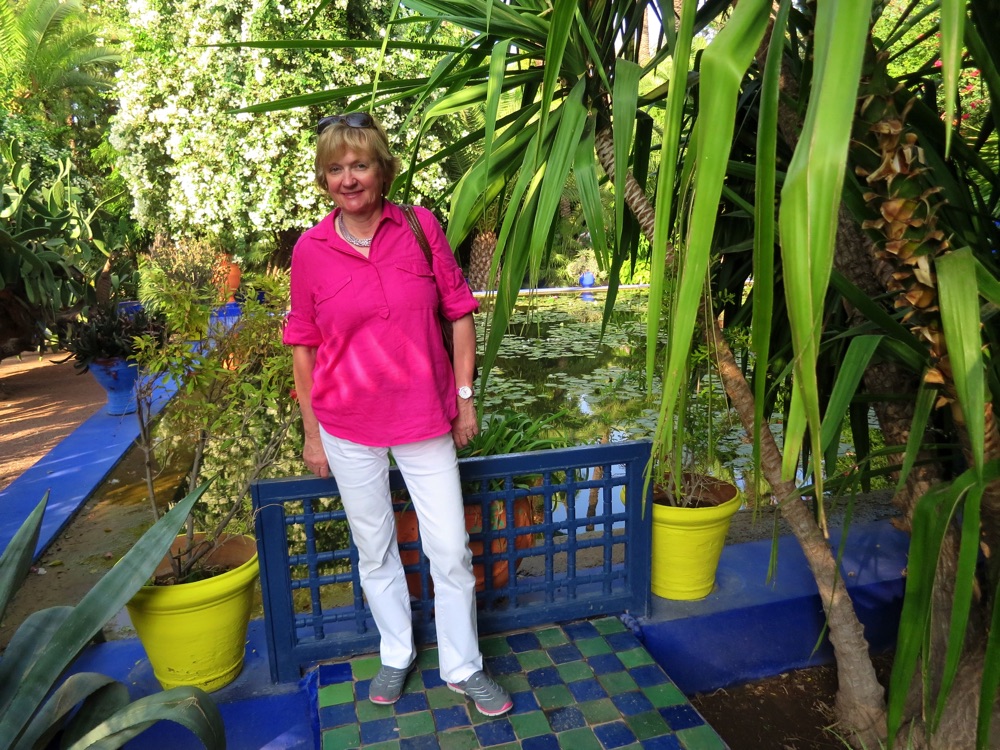
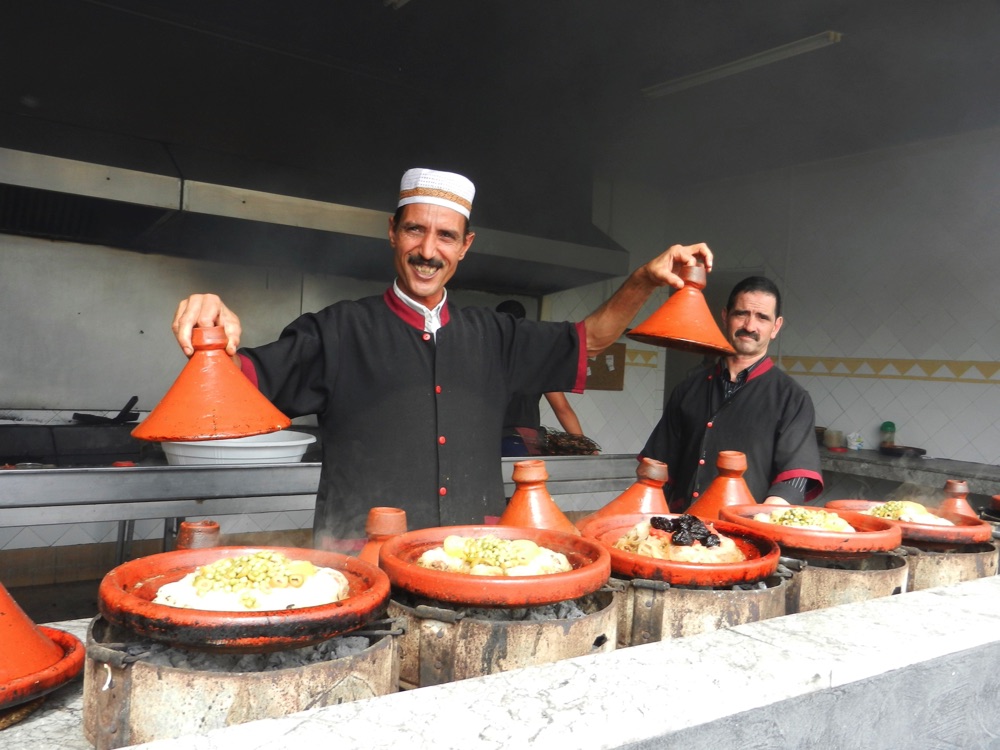
After a visit to the “floating mosque” on Casablanca’s waterfront – one of the biggest mosques in the Muslim world – we headed up the road to Marrakech – the red city, where all the buildings are designated by law to be built with the distinctive terracotta colour of the local “red” iron-rich clay-stone.
Here we visited the Majorelle garden, made famous by French painter Jacques Majorelle in the 1920s and even more famous when it was bought and restored and enhanced by Yves Saint Laurent in the 1980s.
With its rich blue walls and bright yellow and orange pots, the garden made a dramatic impression but it was the lavish and extensive collection of cactus and palms and succulents and dense groves of bamboo that makes the garden special.
Many of these plants have now matured and become giants, but the garden also has a peace and charm that goes far deeper than its sumptuous visuals.
In Marrakech, we visited the famous medina with its square of snake charmers, monkey handlers and musicians.
Unlike the Fes medina, this one felt more like the Grand Bazaar in Istanbul and was much more relaxing and pleasant to wander through.
Our time in Marrakech was spent exploring the city on foot and by horse and carriage ride and we took full advantage of the resort atmosphere of our hotel with its lovely pool and magnificent gardens with avenues of orange trees and towering palms and vibrant explosions of colourful bougainvillea.
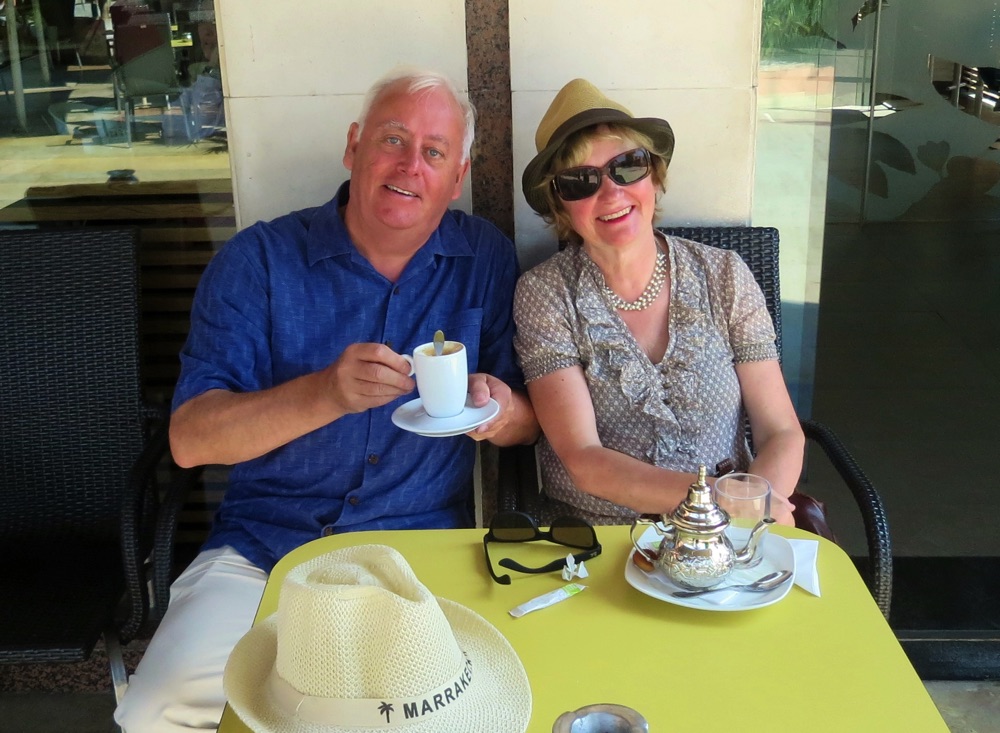
Our final night in Marrakech involved a horse and carriage ride to the medina where we were guided by men wearing brown jalabas and red hats and carrying candle lanterns to a rooftop restaurant.
Here, with the first quarter moon above us, and the call for prayer sounding from the nearby minaret, we dined on chicken tagines and oranges and said our goodbyes. Our Spain-Morocco adventure was certainly one of our tours with many memorable moments.
swhysall@hotmail.com
